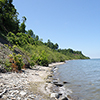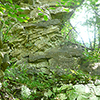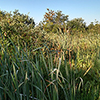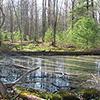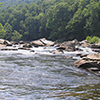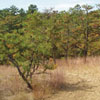Conservation Science
Protecting Pennsylvania's Plants and Animals
Shale Barrens
Shale barrens are found throughout the central Appalachian Mountains from Pennsylvania to Virginia. They’re characterized by open woodlands and the presence of species found only in these ecosystems. This special habitat, found particularly in south-central Pennsylvania, has become an important area for land protection, stewardship and research efforts at the Western Pennsylvania Conservancy.
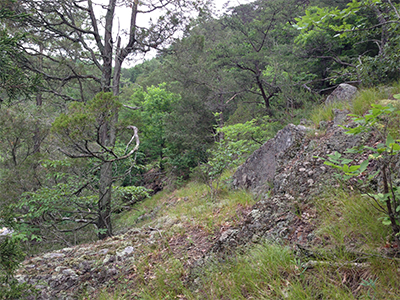 Shale barrens are a globally rare natural community. They support many uncommon plant and animal species that are adapted to its harsh conditions and unique community structure. The south-facing slopes of shale barrens receive direct sunlight, creating surface temperatures that are lethal to many plant seedlings typical of the surrounding forest. The steep slopes, hard-to-weather shale bedrock and continual undercutting of the shale bedrock by streams limits soil development.
Shale barrens are a globally rare natural community. They support many uncommon plant and animal species that are adapted to its harsh conditions and unique community structure. The south-facing slopes of shale barrens receive direct sunlight, creating surface temperatures that are lethal to many plant seedlings typical of the surrounding forest. The steep slopes, hard-to-weather shale bedrock and continual undercutting of the shale bedrock by streams limits soil development.
Certain plant species, referred to as shale barren endemics, have adapted to survive under these harsh conditions. These include the shale-barren evening primrose (Oenothera argillicola), shale-barren ragwort (Packera antennariifolia) and Kate's-mountain clover (Trifolium virginicum).
Shale outcrops found along the Delaware River in Pike County are home to a community type called Red-cedar - Prickly Pear Shale Shrubland. The shale barrens of the Ridge and Valley of south-central Pennsylvania can be described as Red-cedar - Mixed Hardwood Rich Shale Woodland or Virginia Pine - Mixed Hardwood Shale Woodland. All three communities are rare and support rare plant species. The Red-Cedar - Mixed Hardwood Rich Shale Woodland is the type most often associated with shale barren endemics.
Sideling Hill Creek Barrens
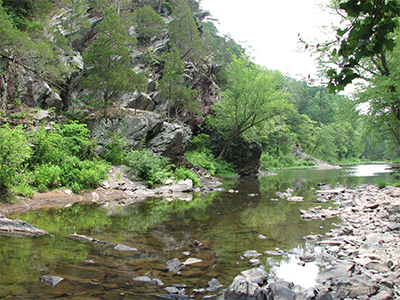 One of WPC’s most significant land protection efforts has been the Sideling Hill Creek Conservation Area, comprised of 376 acres in Bedford and Fulton counties. This conservation area supports the Red-cedar - Mixed Hardwood Rich Shale Woodland and the Virginia Pine – Mixed Hardwood Shale Woodland community types. It’s also home to shale-barren evening primrose, shale-barren ragwort and Kate's-mountain clover. Many wildlife species have adapted to the harsh conditions of the shale barrens ecosystem at Sideling Hill Creek.
One of WPC’s most significant land protection efforts has been the Sideling Hill Creek Conservation Area, comprised of 376 acres in Bedford and Fulton counties. This conservation area supports the Red-cedar - Mixed Hardwood Rich Shale Woodland and the Virginia Pine – Mixed Hardwood Shale Woodland community types. It’s also home to shale-barren evening primrose, shale-barren ragwort and Kate's-mountain clover. Many wildlife species have adapted to the harsh conditions of the shale barrens ecosystem at Sideling Hill Creek.
Most other shale barrens in Pennsylvania, outside of the barrens located on State Game Lands #49 in Fulton County, are in private ownership. Therefore, legal protection of shale barren ecosystems is one of the top conservation strategies for WPC.
Shale Barren Stewardship
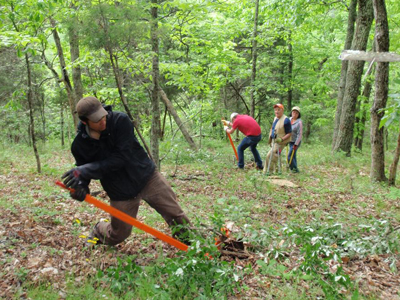 Shale barrens are often threatened by non-native invasive plants, which outcompete and shade-out native shale barren flora. Invasive species that commonly impact Pennsylvania’s shale barrens include crown-vetch (Coronilla varia), poverty brome (Bromus sterilis), cheatgrass (B. tectorum), field brome (B. japonicus), spotted knapweed (Centaurea biebersteinii), Japanese honeysuckle (Lonicera japonica), common mullein (Verbascum thapsus), garlic mustard (Alliaria petiolata) and tree-of-heaven (Ailanthus altissima).
Shale barrens are often threatened by non-native invasive plants, which outcompete and shade-out native shale barren flora. Invasive species that commonly impact Pennsylvania’s shale barrens include crown-vetch (Coronilla varia), poverty brome (Bromus sterilis), cheatgrass (B. tectorum), field brome (B. japonicus), spotted knapweed (Centaurea biebersteinii), Japanese honeysuckle (Lonicera japonica), common mullein (Verbascum thapsus), garlic mustard (Alliaria petiolata) and tree-of-heaven (Ailanthus altissima).
WPC is working to control invasive plants at Sideling Hill Creek. Much of this work is conducted through volunteer workdays. If you’d like to help, please visit our volunteer opportunities page or email us at azadnik@paconserve.org.
Shale Barren Inventory
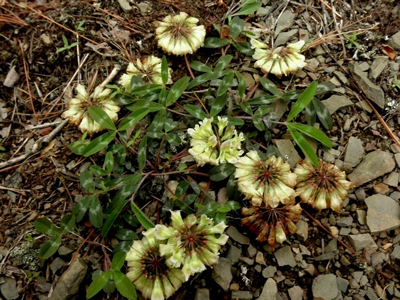 The county inventories for Fulton, Huntingdon and Bedford counties identified 40 shale barren sites supporting over 200 occurrences of rare plants and animals indicating these are anything but barren. Shale barrens represent globally rare communities and our information is necessary for successful conservation and management planning activities for these special places.
The county inventories for Fulton, Huntingdon and Bedford counties identified 40 shale barren sites supporting over 200 occurrences of rare plants and animals indicating these are anything but barren. Shale barrens represent globally rare communities and our information is necessary for successful conservation and management planning activities for these special places.

